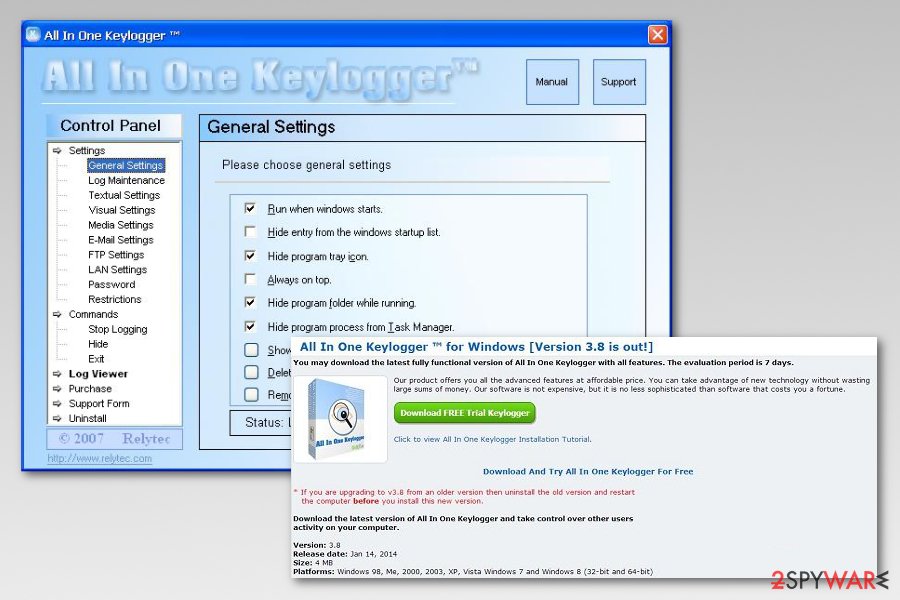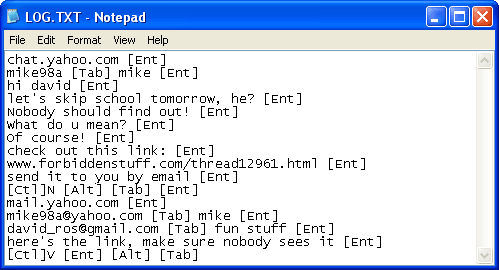
- #HOW TO CODE A KEYLOGGER HOW TO#
- #HOW TO CODE A KEYLOGGER INSTALL#
- #HOW TO CODE A KEYLOGGER SOFTWARE#
- #HOW TO CODE A KEYLOGGER CODE#
#Write list to file after each key pressed #Create a function that defines what to do on each key press #Create an empty list to store pressed keys So let’s first think conceptually what we want to happen? Well what we need is some list that will keep appending keys that we pressed on keyboard right? And then, once a key is pressed it will write this list to a file. Now, what we want to do is have Python write the keys we press into this file (rather than having the sample text there).
#HOW TO CODE A KEYLOGGER HOW TO#
We already know how to create the log.txt file with some sample text. In our case, we would like Python to record the keys that we press and add them to this file.
#HOW TO CODE A KEYLOGGER CODE#
Running the above code will create a log.txt file which will have This is our log file written in it. Let’s first create this sample file and then integrate it into the key logging process: We would like our keylogger to record the keys that we press and store them in a simple text file. You can practice with different combinations of keys, and depending on what you need the code can differ a little, but this is a general overview of how the press and release logic works for controlling the keyboard. pressed() method of the Controller() class that we can use: There needs to be some convenient way of using it. But how about the keys that we keep pressed while typing? Such as shift? And our goal is to press “Ab” (capital a, b). This option works for special keys that we press and release, such as space, enter, and so on. Special keys are called using the Key class from the pynput module.įrom pynput.keyboard import Key, Controller Now, how do we handle special keys? What if I want to press “a b” (a, space, b)?Ī complete list of all special keys is available here. Now you will see that the output is “ab”. Of course you can press and release multiple keys: It is also designed to press and release one key at a time. Note that this code will type “a” wherever your mouse cursor is located. You can think of these methods exactly as they are described, and it is how we type, we press and release each key on the keyboard. This class send the keyboard events to our system. To begin controlling the keyboard, we need to create an instance of Controller() class which will have the.

#HOW TO CODE A KEYLOGGER INSTALL#
If you don’t have it installed, please open “Command Prompt” (on Windows) and install it using the following code:

To continue following this tutorial we will need the following Python library: pynput.
#HOW TO CODE A KEYLOGGER SOFTWARE#
On the other hand, a lot of malicious software uses keyloggers to attempt to get usernames and passwords for different websites. They are often used for monitoring the network usage as well as troubleshoot the technical problems.


Keyloggers are a type of monitoring software used to record keystrokes made by the user with their keyboard. In this article we will discuss how to make a simple keylogger using Python.


 0 kommentar(er)
0 kommentar(er)
